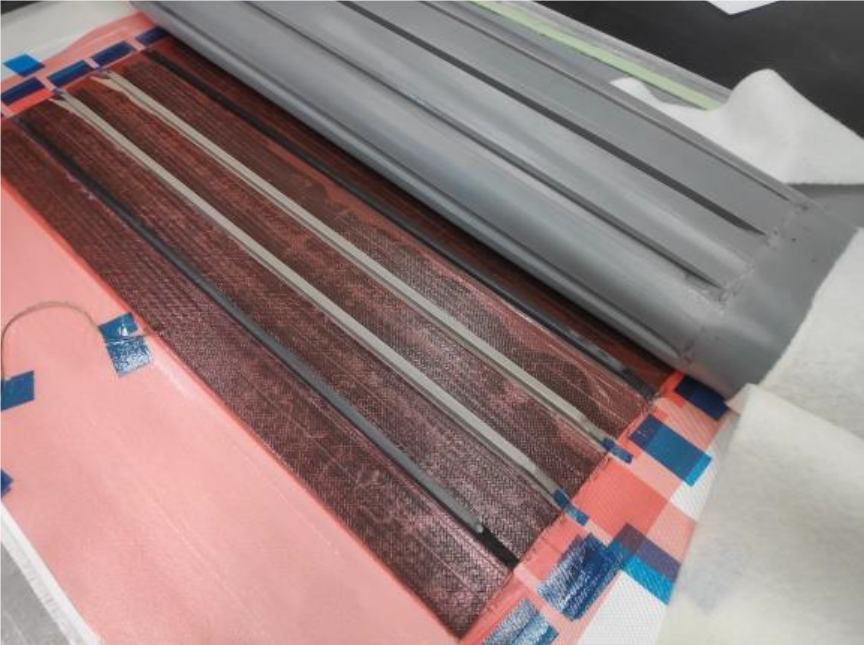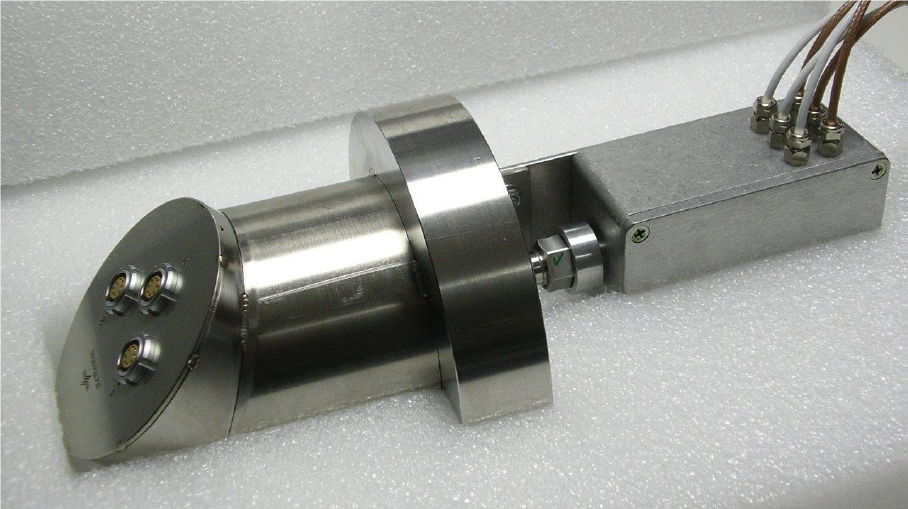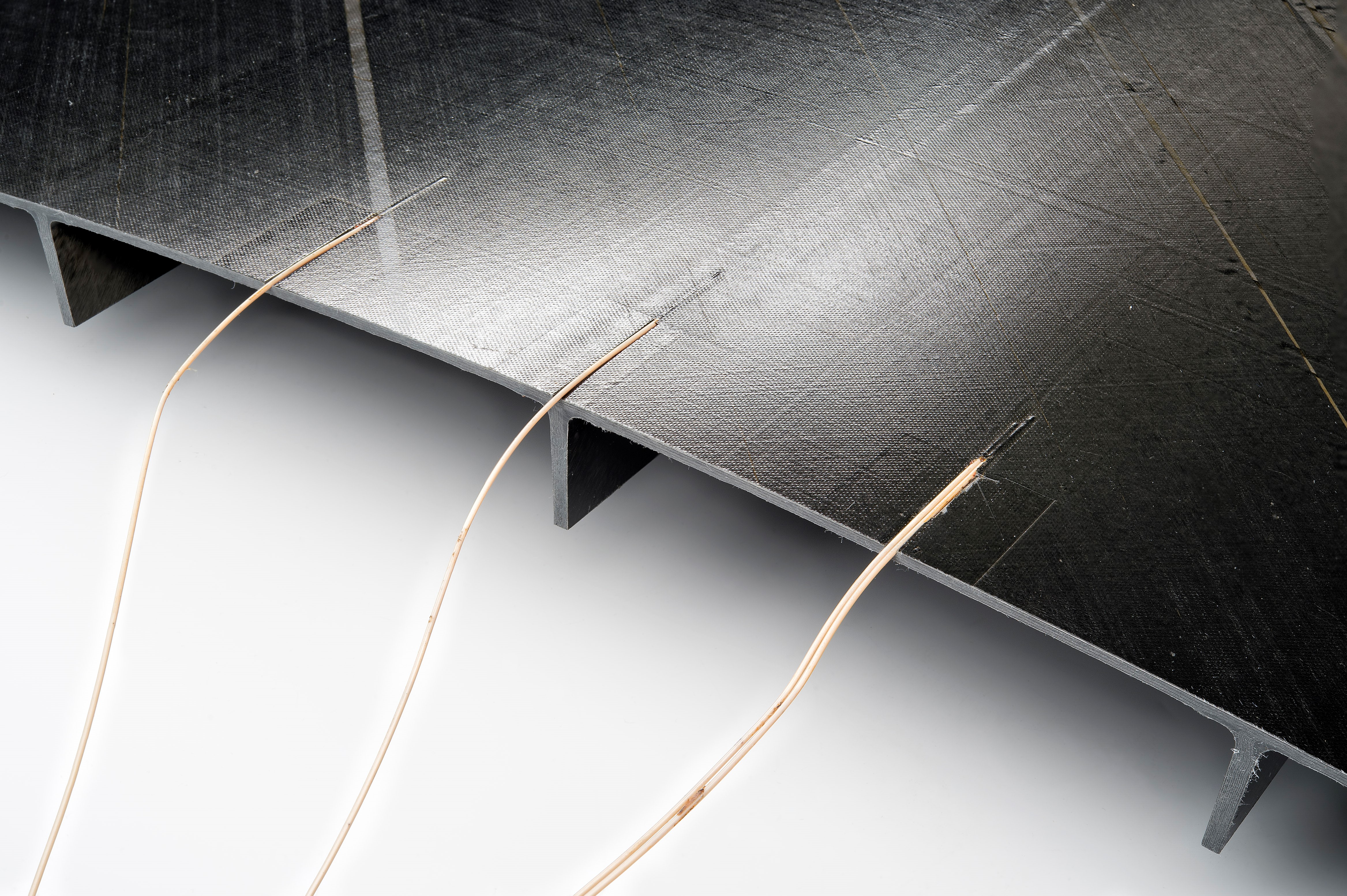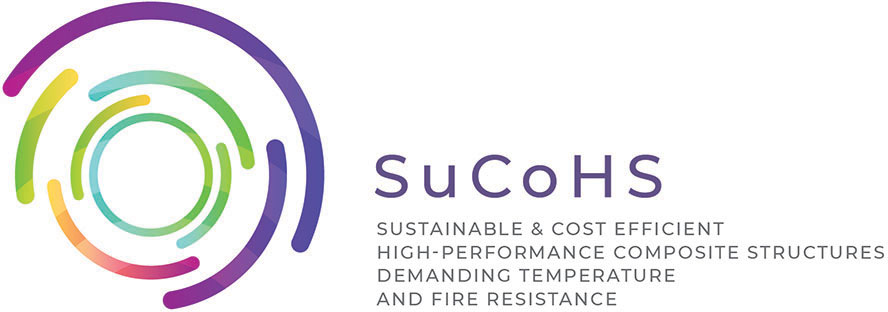January 2020
The SuCoHS partners have progressed in several fields:
New materials and manufacturing processes
Within SuCoHS, carbon fiber composites using PFA (Polyfurfuryl alcohol) as matrix material are examined as a sustainable system for aerospace interior application which satisfies the Fire Smoke and Toxicity requirements and owns the possibility for processing through automated fiber placement.
A PFA resin formulation has been developed for application on carbon fibre with a film coating prepreg techology. The resulting carbon fiber composite manufactured via out-of-autoclave shows a combined low heat release and smoke density.
| Composite |
THR (kW.min/m2) |
PHR (kW/M2) |
SD (Ds) |
| CF/PFA (45%) | 5.3 | 40 | 10 |
Future progress will mainly be focused on the application of unidirectional prepreg tape in automated fiber placement.
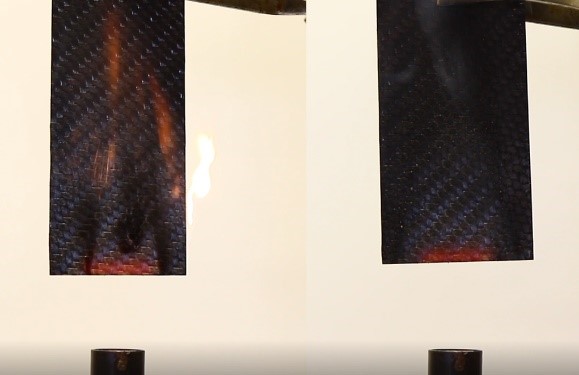
New analysis methods, allowables and structural concepts
The risk mitigation structure for the Aernnova Engineering Division use case was designed with special focus on investigating its structural performance under various thermomechanical load conditions. The physical structure was built including Fibre Bragg Grating (FBG) sensors which will be used for validation of numerical analysis. In parallel to manufacturing, the virtual model was applied to the Finite Element Analysis (FEA) routines developed earlier within the project. First evaluation methods are applied in order to assess the structural behavior in terms of stability and strength behavior. The implemented criteria will be used to investigate the structural behavior in dependence on manufacturing defects, load variations and material uncertainties.
Further, methods for probabilistic analysis are developed to focus on reliability analysis and inverse uncertainty quantification. The methods will use the results coming from structural analysis in order to challenge probabilistic design approaches such as the use of b-values instead of Knockdown Factors (KDF) or the possibility of tolerance relaxation.
A topology optimization procedure was developed for the Automatic Fibre Placement (AFP) process of the Collins Aerospace shell structure. The methods lead to weight reduction resulting from optimizing AFP-stiffeners dimension and position. The results underline the industrial relevance and usability of the AFP. Further, structural analysis methods are developed to investigate the process-induced distortions and residual stress. The upcoming work will focus on the result validation.
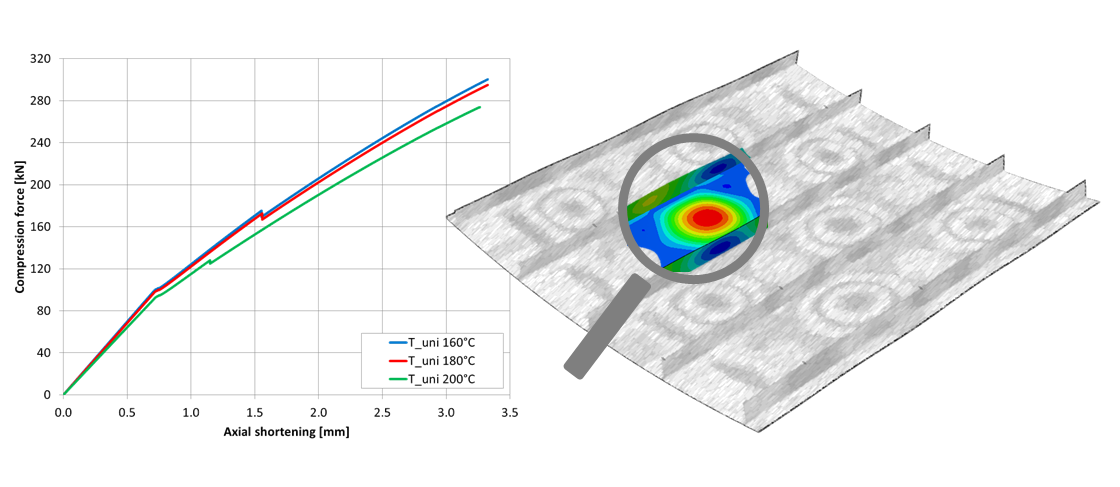
New sensing and evaluation systems
A range of online inspection technologies have been developed in SuCoHS to monitor and potentially correct the manufacturing process.
The new AFP monitoring system by Apodius as well as the process monitoring systems by Synthesites and Technobis were installed at NLR’s facilities to start trials with the SuCoHS materials at lab scale. A series of demonstrations took place during the mid-term review meeting in March 2020 in the AFP facility to lay-up panels cured in an oven and an autoclave. This way, these monitoring technologies could be showcased to all consortium partners. All of these demonstrations were very successful, ensuring the performance for the serial trials that will follow.
More details on the demonstration workshop are provided within the “Interviews” of this newsletter.
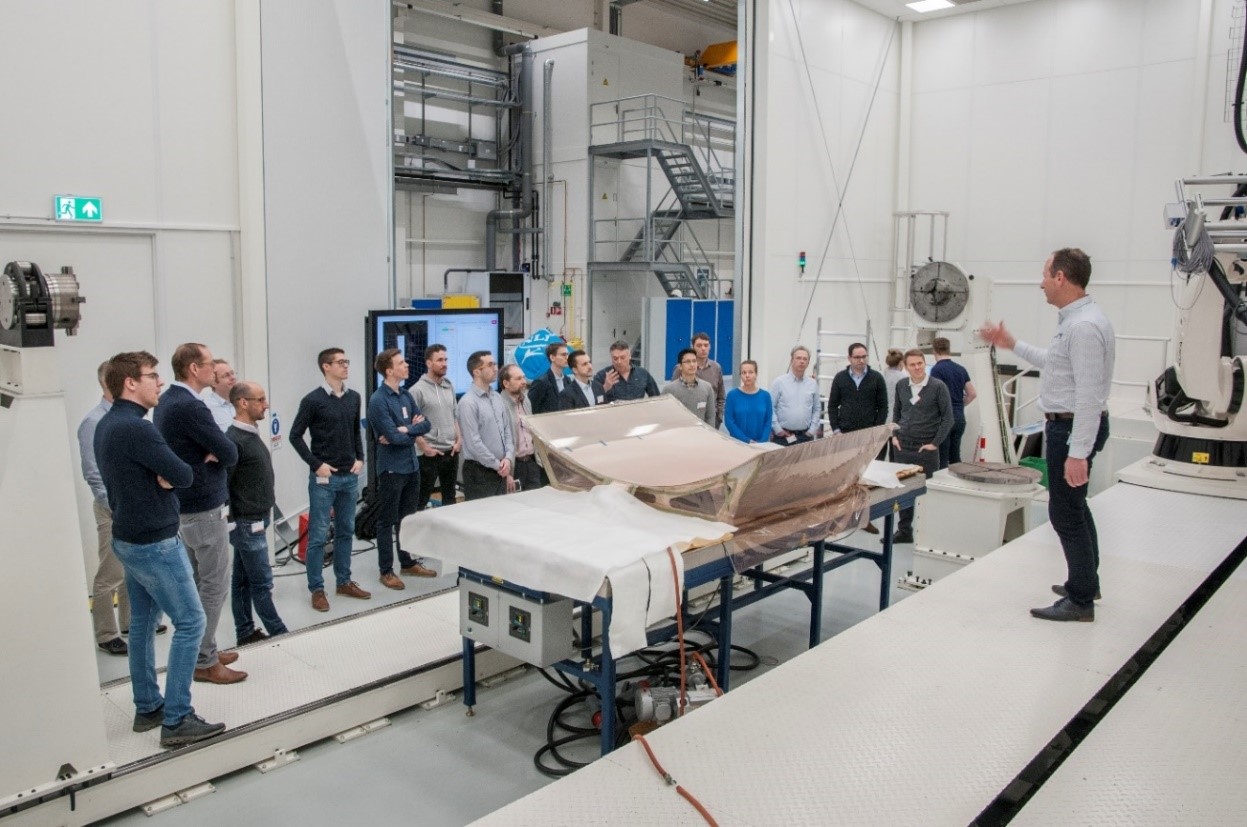
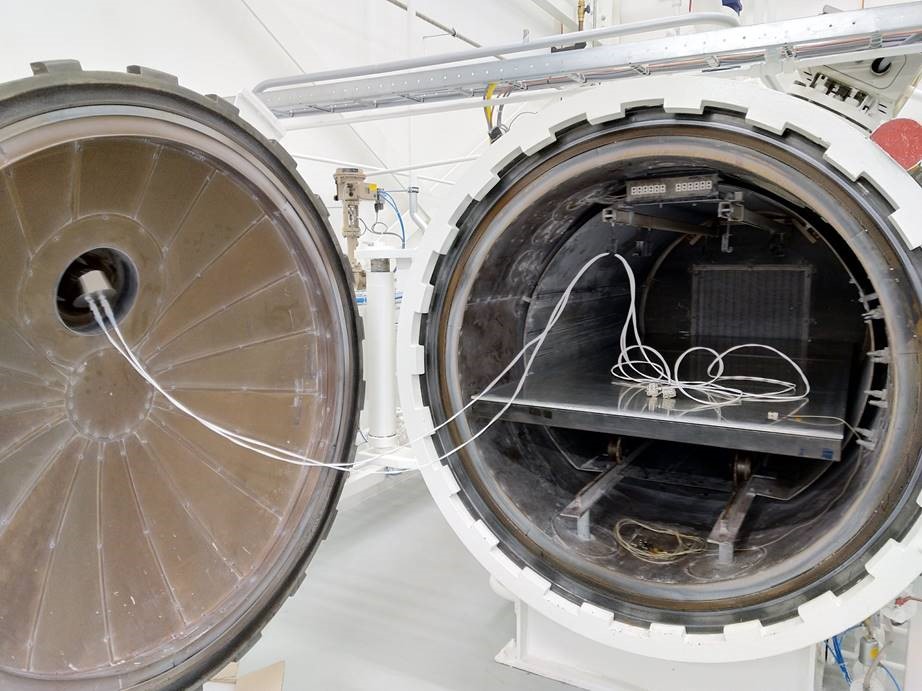
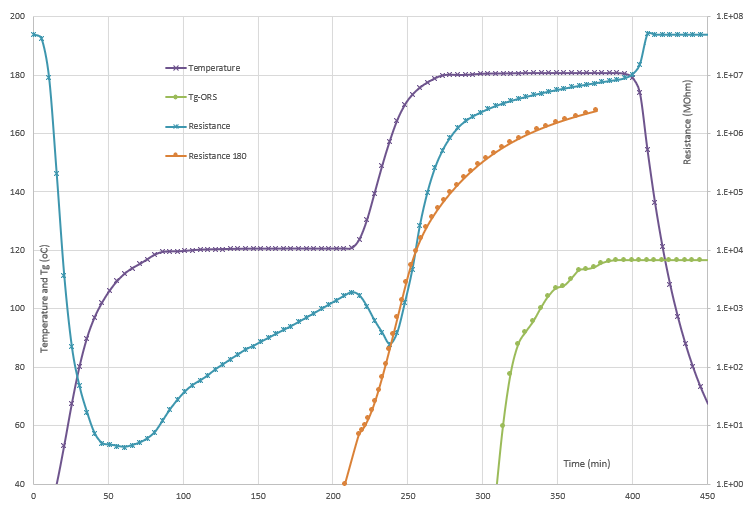
Integration, testing and validation
Building up upon experience from previous projects e.g. ECOMISE (GA number 608667), the schema of the central database was further developed to store and exchange data from simulations, manufacturing procedures and product usage. Optical fibres were automatically positioned by the fibre placement technology and completely embedded into the material. Sensors were integrated to capture strain-, temperature- and cure data from several production procedures as well as impact detection during thermomechanical testing including using the same embedded sensors. Solutions were found to guide wires and optical fibres through the autoclave wall to gain data from the embedded sensors during curing. New high temperature materials based on thin ply technologies combined with toughened cyanate ester and bio-based polyfurfuryl alcohol resins were developed and prepared for automated lay-up by fibre placement. Several trials were performed with promising results. A single curved, blade stiffened, Risk Mitigation Structure (RMS) was manufactured by application of hot forming. Sensors were embedded into the new material and the accuracy of fibre deposition was monitored by an integrated 3D vision system for fibre placement. Data was generated and stored. The stiffened panel will be tested under compression loading under elevated temperatures up to 350°C in the upcoming months. All consortium partners were involved to achieve these results.
